‘It’s a Pruesplosion’ – inside the Bake Off star’s technicolour home
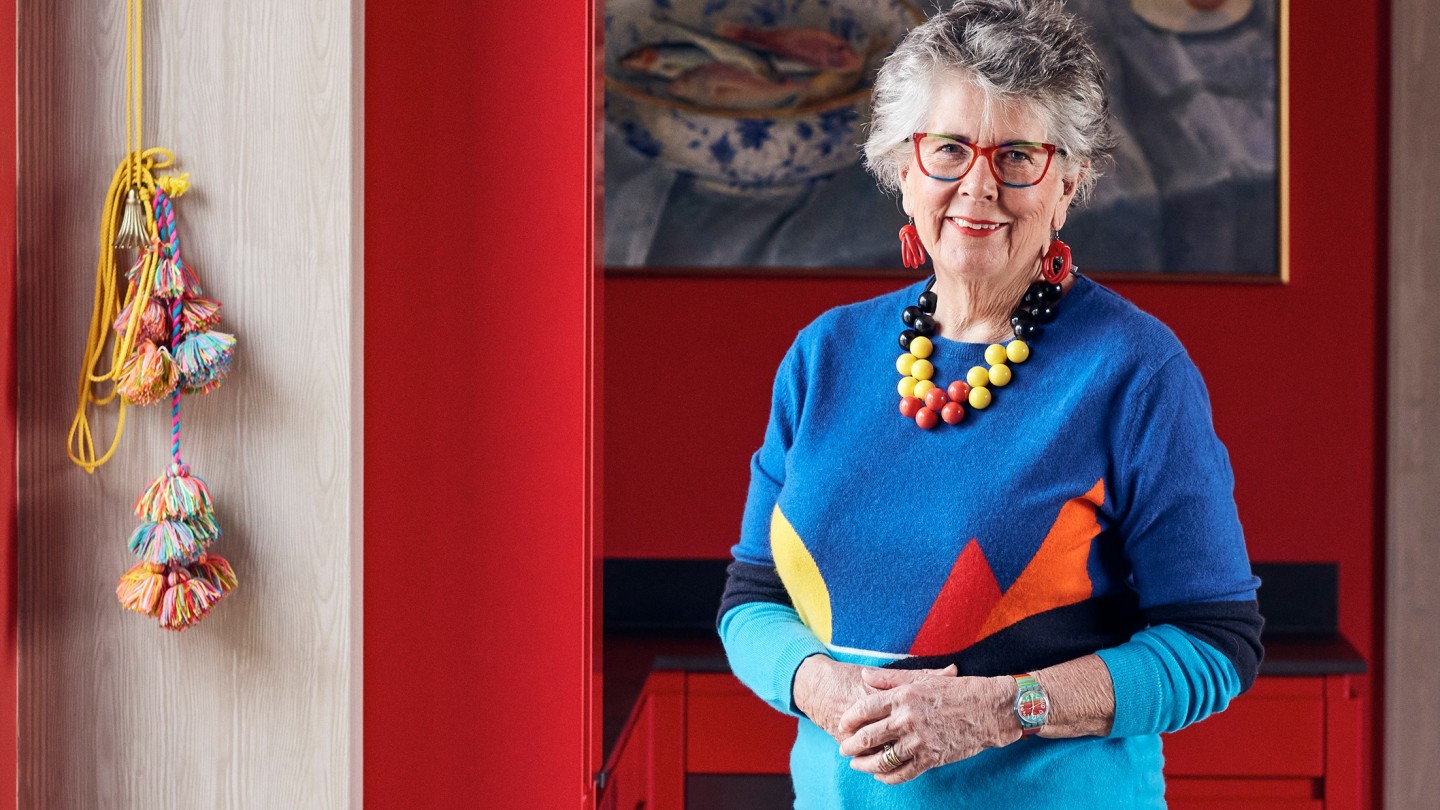
Roula Khalaf, Editor of the FT, selects her favourite stories in this weekly newsletter.
Yes, this house is colourful. Immensely colourful. Dame Prue Leith and her husband John Playfair were never going to go monochrome when they built their dream Gloucestershire home. The result has as many pop Pantone shades on its walls and floors as you’ll find in Leith’s famous collections of bauble necklaces. “We call it a ‘Pruesplosion’,” says former fashion designer Playfair, who has been married to the author, broadcaster and chef since 2016.
It’s a reflection of Leith’s positive outlook. “I think people should get through the winter by wearing yellow,” she says, as she walks me through her lemon-coloured kitchen. She’s wearing one of the 200 or so necklaces that hang like an art installation on the sea-green walls of her bedroom, and the frames of her glasses are akin to a Rubik’s Cube of bright primaries.
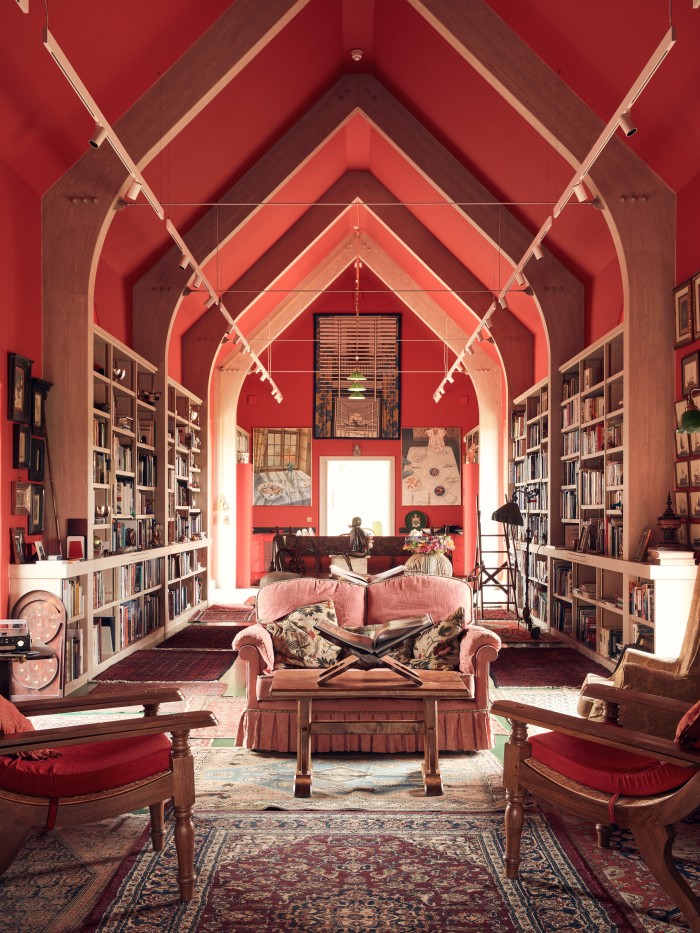
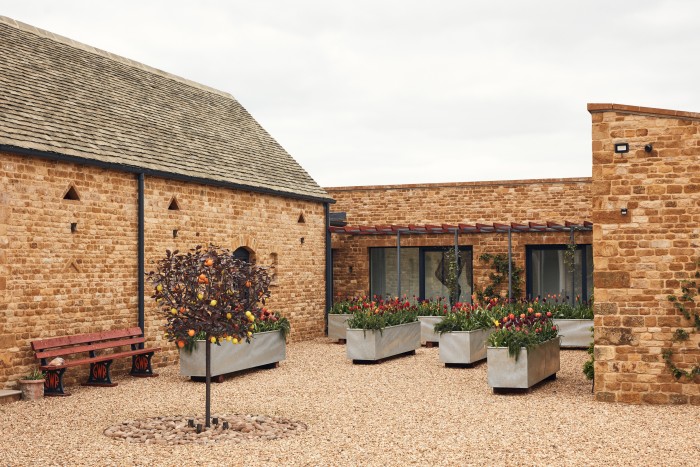
As we pass through the living room, there are blinds made from Timorous Beasties’ Graffiti Stripe Velvet fabric that have a ’80s feel in keeping with everything else. It’s a place for fun, somewhere to bake cakes and drink wine. You might be tempted to rollerskate around it. “We had a great lunch here recently with our 10 grandchildren,” Leith says. “We gave each of them a tree to plant in the garden. Their ages range from 14 to two weeks old, so some of them had more of a hand in the planting than others.”
There’s a lot of land around this house, which Playfair and Leith have enjoyed landscaping with everything from a fake tree that turns out to be a water feature to 160 rare or endangered fruit trees. “Let me tell you why they are rare,” says Playfair, chuckling on the AstroTurf terrace of their bedroom as we look out to the young orchard below. “It’s because they are deformed and taste disgusting. The only thing we can do is turn the apples into some sort of alcohol.”
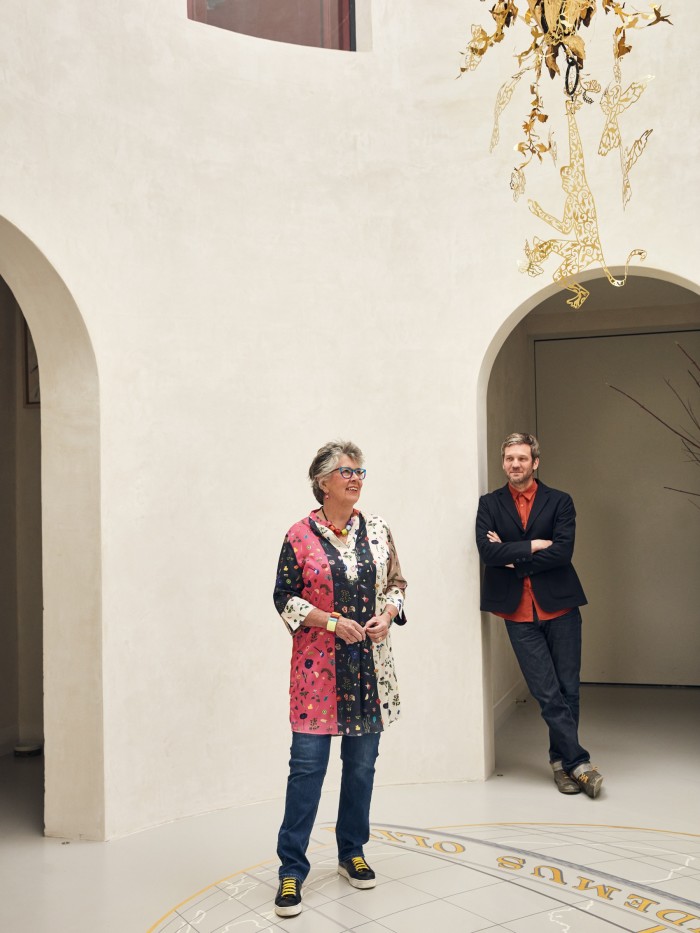
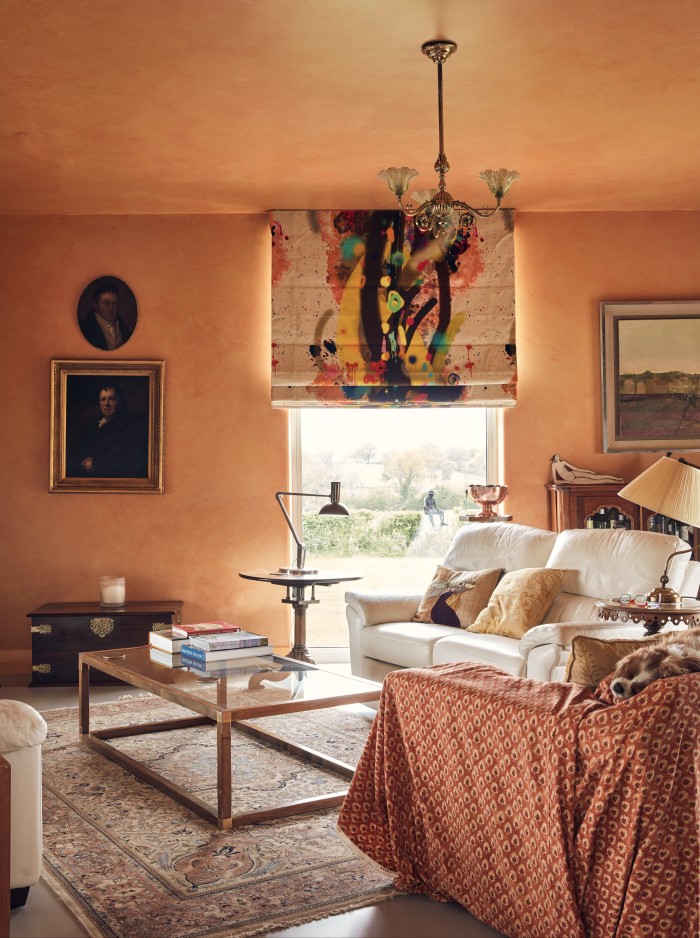
There are countless playful elements in the house and its surroundings, including Bake Off cartoons in the downstairs toilet and a life-size polystyrene figure once used by the Royal Shakespeare Company in Stratford-upon-Avon to populate a crowd scene: Leith bought it for £5, painted it in graphite and resin and turned it into something resembling a would-be Gormley perched in a hedge in the grounds of the house. It’s a typically eccentric gesture by the woman whose style is so characteristic that in 2019 she put her name to a range of jewellery and glasses. “I collect antique china,” says Leith, pointing up at a chandelier in her vibrant turquoise-walled office that she has customised with floral teacups, floral necklaces and assorted haberdashery.
Leith launched a cookery school, has written eight novels and 14 cookbooks, and became a national treasure long before she became a global star via The Great British Bake Off. She used to live in a house a short drive away but now she’s in her 80s and her husband in his 70s, she decided to create something that would be their forever home as a couple, as well as a playground for a retirement that neither seems to be ready to embrace. “We invited three people to come up with ideas for us,” says Playfair. “Two of them designed Lego monasteries, and the other one, an architectural designer, came up with something we fell in love with.”
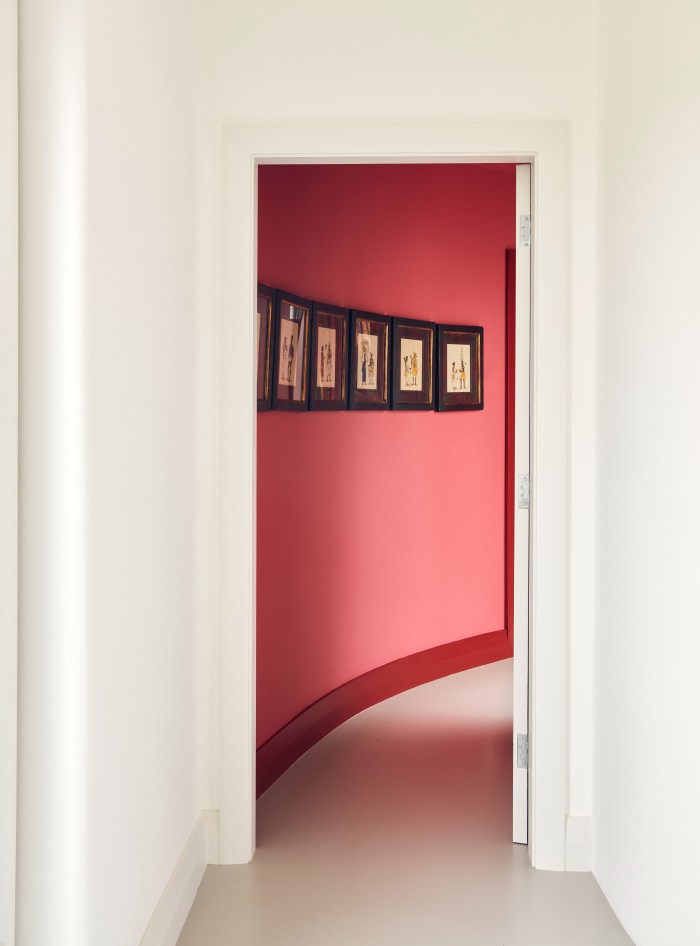
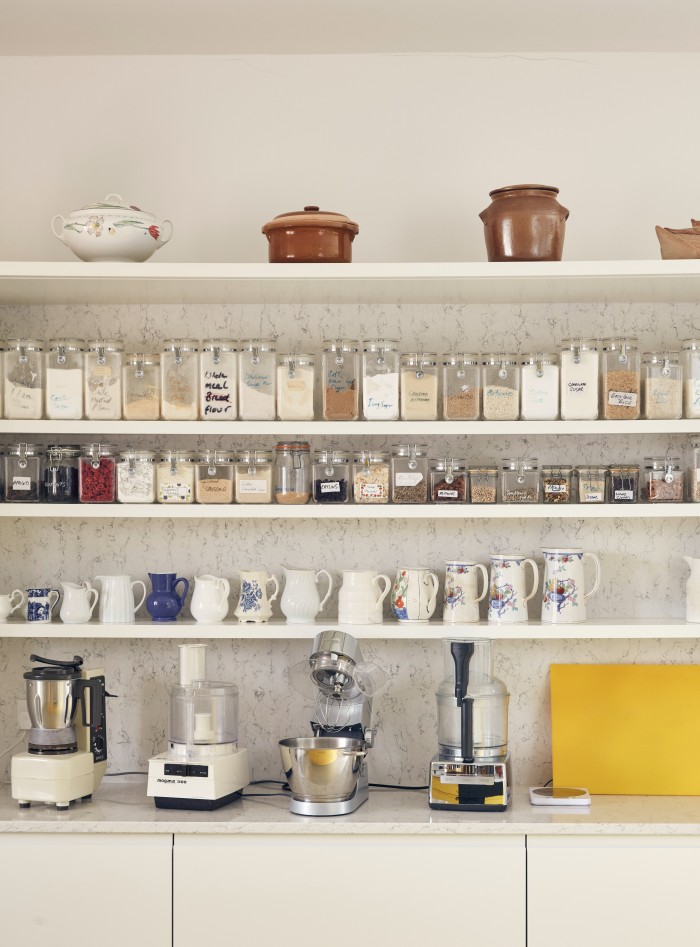
That architectural designer is Charlie Luxton, who has been nearly as omnipresent on television as Leith, overseeing a variety of architecture shows. Luxton put an ambitious project on the table but relished working out how to make it happen. “There was an old stone farmhouse here originally, which wasn’t particularly nice, and a lot of leftover sheds and farm machinery. It was always going to be about building something new,” he says. “I created the plans around the idea of a central drum shape, a core from which the rest of the house spreads out, and it’s also all raised off the landscape slightly, as an interpretation of a Palladian villa, and the idea of the piano nobile. It uses the rhythm of classical architecture but we were able to incorporate a lot of sustainable elements, with extra insulation, triple-glazing and air tightness.”
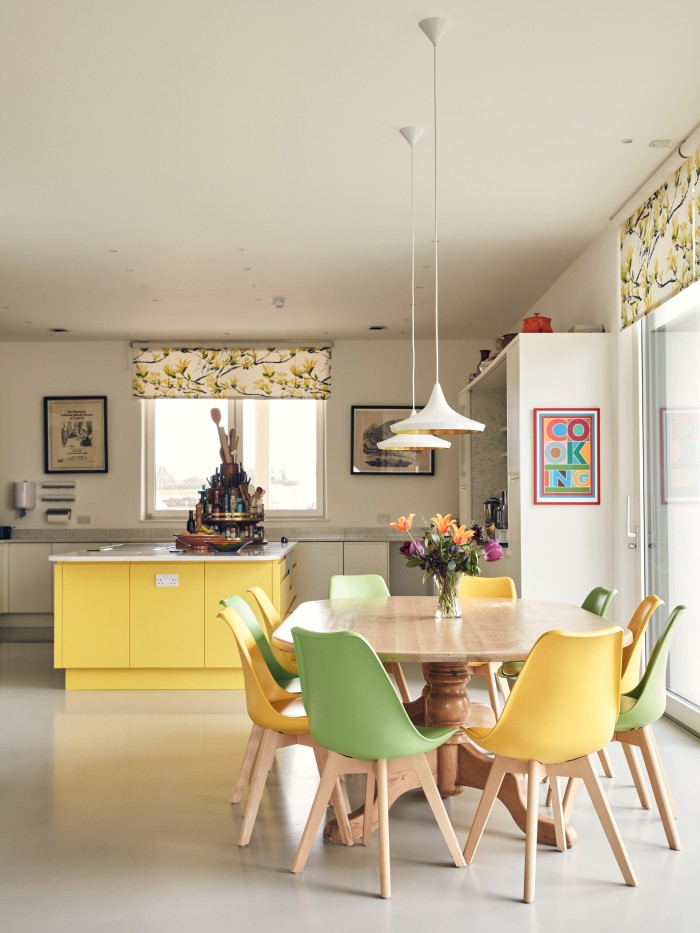
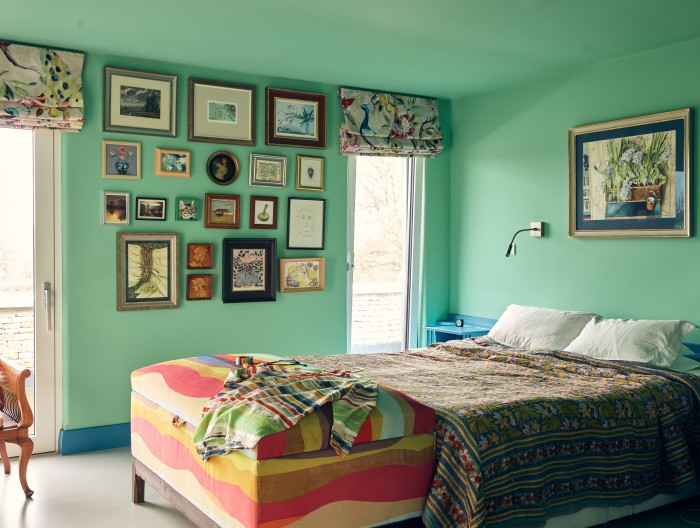
That central drum serves as something of a visual red herring. It creates a neutral but modern polished plaster atrium that on first sight one imagines could take the rest of the house into John Pawson territory. Instead, the floor has a huge gold leaf painting of a globe on it, with Playfair’s Scottish-family motto wrapped around the equator: “Sic te non videmus olim” (loosely translated as “We were not always thus”). The graphic was taken from the signet ring that Playfair wears constantly. Hanging above the globe is an antique lantern that Leith commissioned her niece Amy Douglas to customise with gold leaf and copper cut-outs of birds and monkeys. “It had been sitting in storage for ages, gothic, dark and plain, and I wanted it jollied up,” she says.
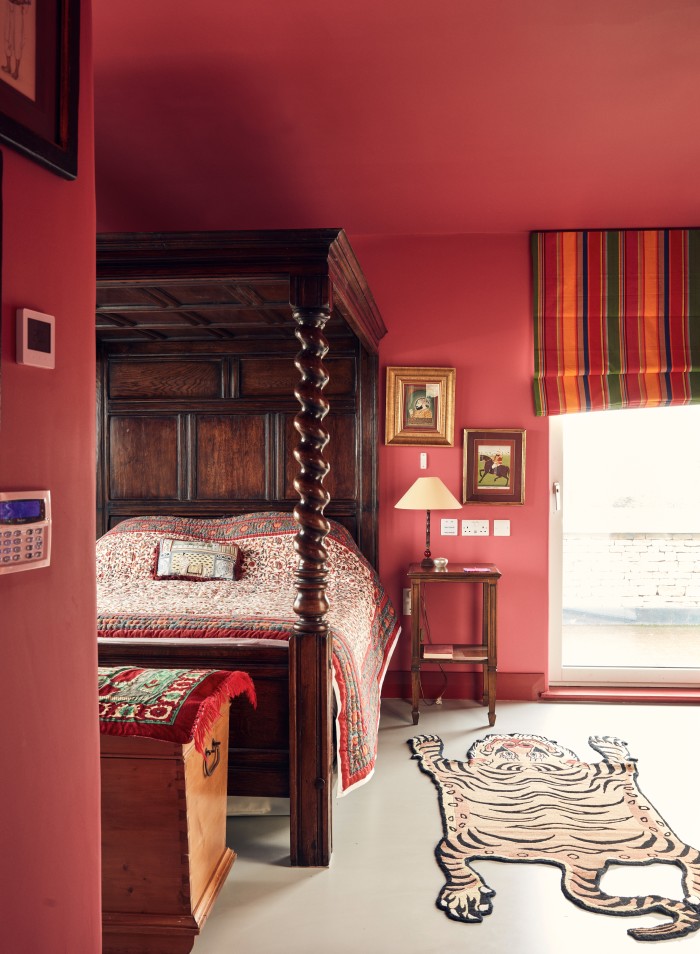
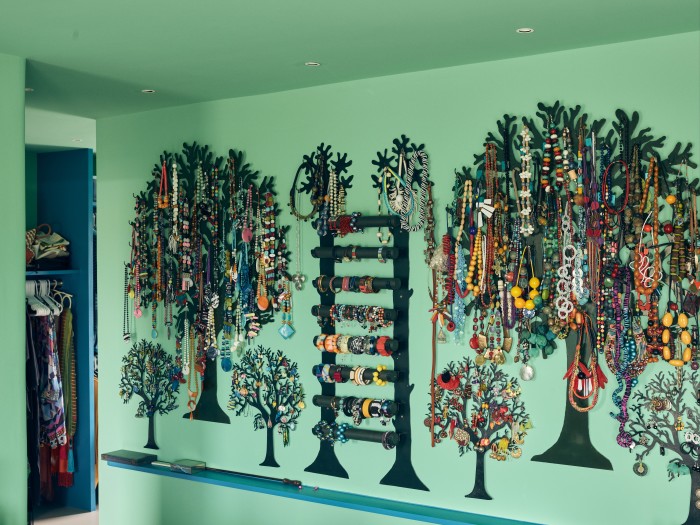
While the couple share a lot of tastes, the house has come together through enjoyable tensions. Some rooms reflect Leith’s preferences, others Playfair’s – including his “banishment” bedroom with his antique four-poster bed in it. There are also half-and-half rooms, like the main library (which includes the dining room) with its vaulted ceiling. One end has Playfair’s ornately framed classical oils and rows of books, the other has Leith’s paintings and tapestries. The room itself is the most striking in the house – the walls are finished in a bright red and the poured floors are a baize green, covered in Playfair’s collection of antique rugs. At one end there’s a large wooden dining table. “John likes to tell people who know about antiques that it’s ancient, and that it must have hosted many historic dinners,” says Leith. “But actually, he bought it for next to nothing from an old pub and he put multiple coats of varnish on it. If you can look closely, you can see it’s plywood.”
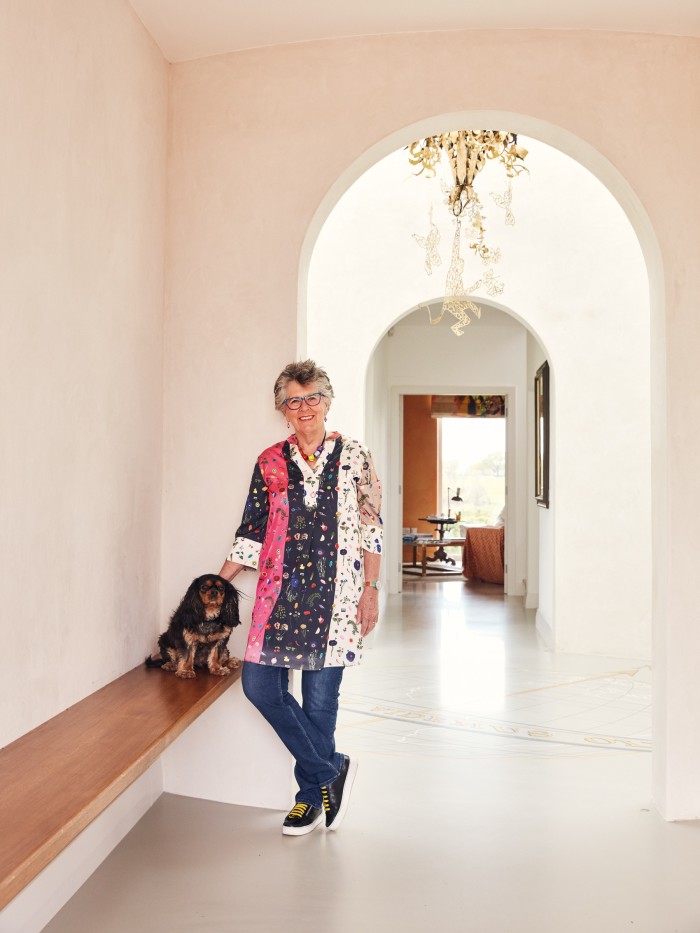
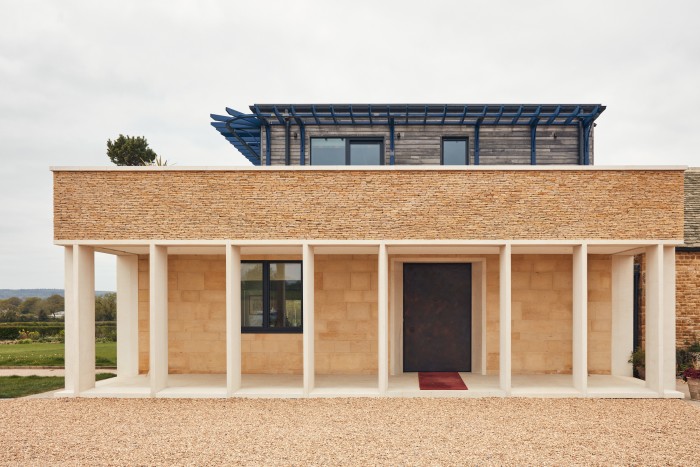
While the table might not be authentic, plenty of the antique furniture is, as are the luminescent bowls lined up across that disguised plywood surface. Each half orb looks like a broken giant egg, individually lined in a different bold colour that appears to glow from within. “They are by Siobhan and Martin Miles-Moore, who are based in Cumbria,” says Leith. “I fell in love with their work, and how bright and subtly Japanese it seems. I asked them to make me some pieces, and they started asking me where the house was, and what was around it, and what the foundations were. When they found that there was a lot of clay here, they came and dug up the raw materials to make the pieces. The clay is bright blue – incredibly beautiful.”
Any house built to satisfy Prue Leith is going to have an impressive kitchen, and the one here is engineered and planned for function, as well as to create an upbeat mood. While it’s in the sticks, there’s nothing country kitchen about it. The conversation that Luxton had with Leith was straightforward: she wanted exactly the same kitchen she had before. “The problem I often have with kitchens is that they were traditionally designed by men at a time when men didn’t use them much. So doors were never put on cupboards, fridges or ovens in an intuitive way,” she says. She asked for a large island to cook around. “I also want the things I need most often within easy reach, so one of the improvements on this kitchen from my last is that I have more shelf space. I don’t want things hidden in cupboards when I need access to them constantly. We had a pantry built because it’s incredibly useful for storing things close to where I am cooking, and in the middle of the kitchen island there’s a lazy Susan, which I commissioned about 50 years ago, made from cherry wood. It’s one of the most beautiful things I own – I knew exactly what height I want my spices, knives and spoons to be at, and it was made to those specifications.”
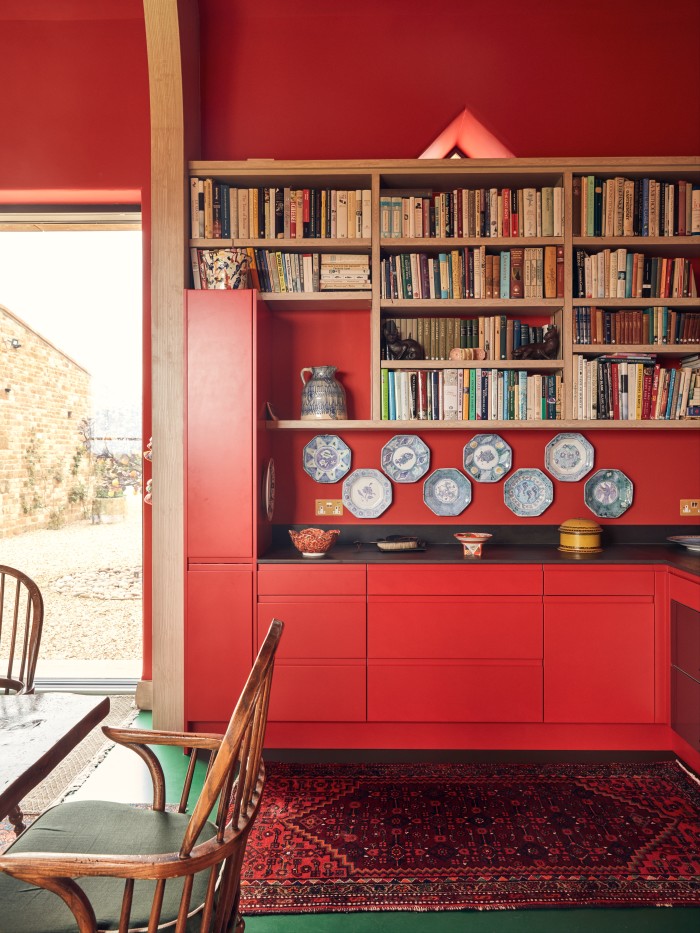
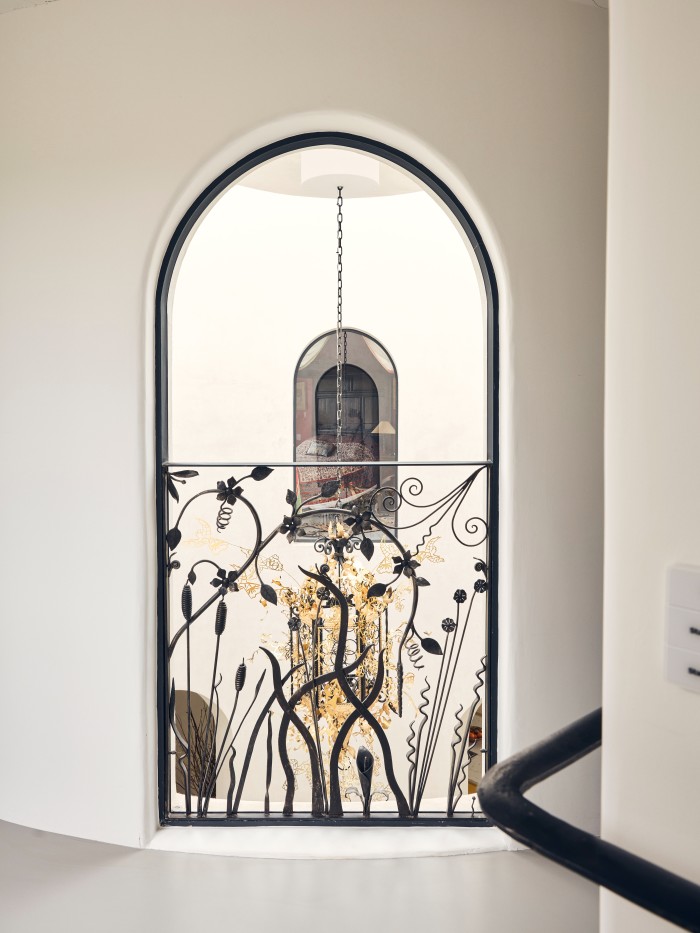
While the work surfaces in Leith’s kitchen are Silestone, and the flooring is a neutral off-grey poured resin with gentle ripples of purposeful imperfection, most of the units and accents in Leith’s kitchen are yellow – that dazzling shade of Sicilian lemon. Upstairs, her bathroom is a mix of green and red. Those are the colours she likes to immerse herself in every morning, but when she cooks, it’s yellow, conjuring sunflowers and mustard fields. “I just love it,” she says. “I really appreciate a joyous explosion of colour.” One might say it’s akin to a Bake Off showstopper.
Comments